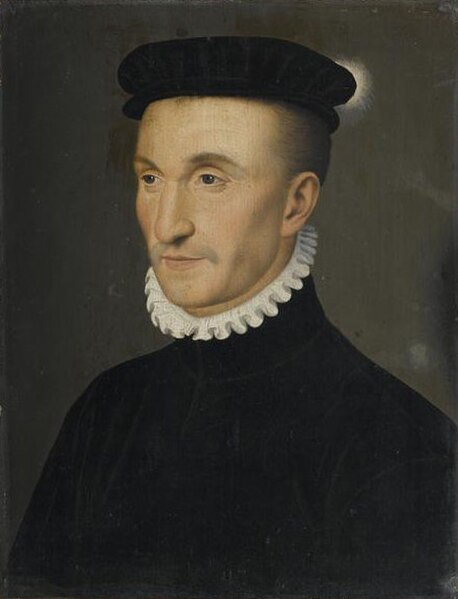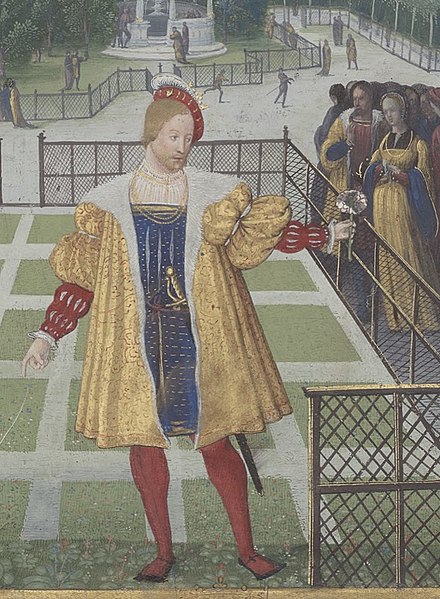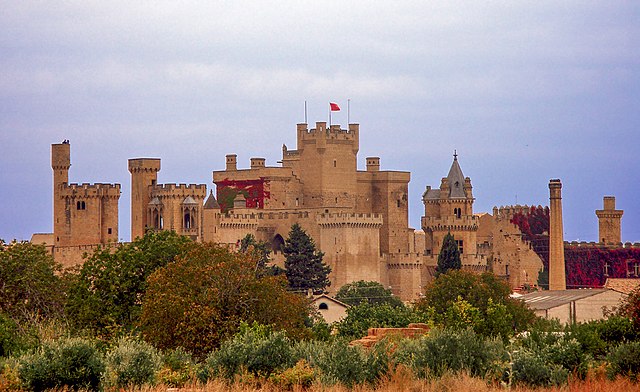Henry II, nicknamed Sangüesino because he was born at Sangüesa, was the King of Navarre from 1517, although his kingdom had been reduced to a small territory north of the Pyrenees by the Spanish conquest of 1512. Henry succeeded his mother, Queen Catherine, upon her death. His father was her husband and co-ruler, King John III, who died in 1516.
Portrait by unknown French artist
Henry in contemporary miniature
Spanish conquest of Iberian Navarre
The Spanish conquest of the Iberian part of Navarre was initiated by Ferdinand II of Aragon and completed by his grandson and successor Charles V in a series of military campaigns lasting from 1512 to 1524. Ferdinand was both the king of Aragon and regent of Castile in 1512. When Pope Julius II declared a Holy League against France in late 1511, Navarre attempted to remain neutral. Ferdinand used this as an excuse to attack Navarre, conquering it while its potential protector, France, was beset by England, Venice, and Ferdinand's own Italian armies.
Castle of Olite, a major fortification and royal site (central Navarre)
Jauregizarre, a 16th-century tower house north of Navarre, home to the Ursua, a clan of notaries
Pope Julius II, died in the wake of his Pastor Ille Caelestis bull, written at the Chancery of Aragon in Rome
Antonio de Nebrija, an able scholar at the service of Ferdinand II of Aragon and Isabella I of Castile






